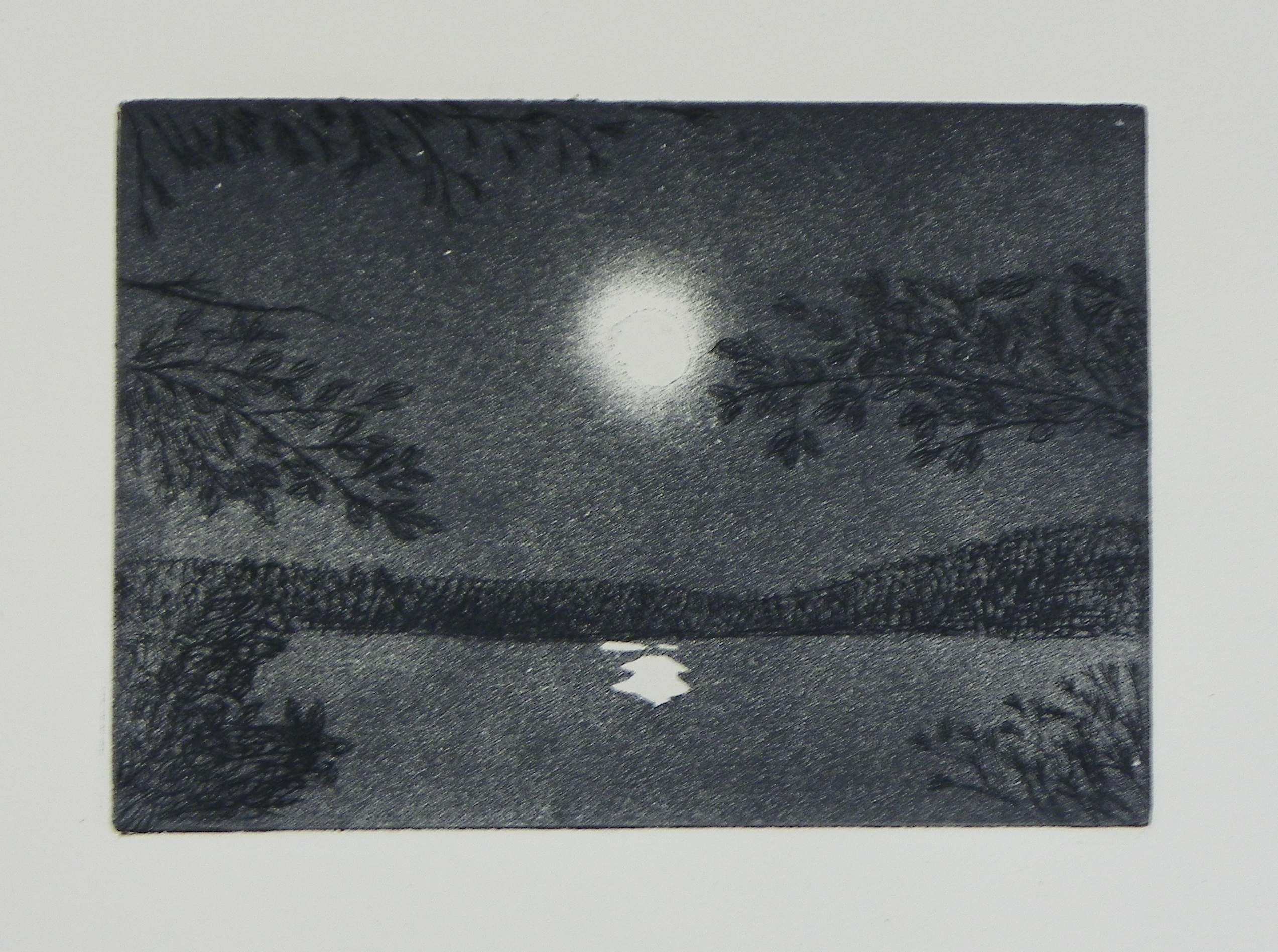Dublin Moon
An etched print

This is a traditional etching done on a sheet of copper. I was driving home one evening through Dublin NH along route 101. Travelling east the road is curvy as it runs along the edge of Dublin Pond. As I drove around the corner, there was a beautiful full moon rising above the pond. So I pulled over and took a picture. This image is based on that picture.
In traditional etch, a resistive material material is applied to a copper plate. I prefer to use Baldwin's Ink Ground (BIG), as it is non-toxic to you and the environment. Once applied and cured, lines can be scratched, using and etching needle, to expose the underlyng copper. You are not gouging the plate, you are just removing the BIG to expose the copper. Once the desired image is acheived the plate it placed into a tank of ferric chloride. Ferric chloride, sometimes referred to as iron perchloride, is not an acid but a corrosive salt. Although it is a lot safer the the older etching methods of using nitric acid, care should still be taken to avoid contact with skin and eyes, using protective gloves and goggles.
To produce darker lines, the etching time is increased, e.g., 45 minutes, a very faint line take a just a minute. Once the plate has been etched, the plate is removed from the ferric chloride and the etching is stopped by placing the plate, alternating, in a tray or water and then a tray of a solution of vinegar and salt. This is repeated 3 times for a total of 15 minutes. The BIG is removed with citrus based cleaner. The plate is inked, and wiped, leaving just the ink in the etched lines, a piece of pre-soaked and blotted paper is placed on top, and then run through an etching press. The extreme pressure of the press forces the damp paper into the etched lines, thus transferring the ink to the the paper. If you get the desired image, you can start making multiples of the print, if not, repeat the entire process. Reapply the BIG, add more lines, etch, wash, clean, ink, print.
Unlike a dry point etch that depends on the burr for darker tones, the chemically etched lines vary in depth, to hold more or less ink. There is no real limit to the number of prints that can be made. There is no degradation to the plate between prints. It's up to the artist to decide on number of prints to be made.

